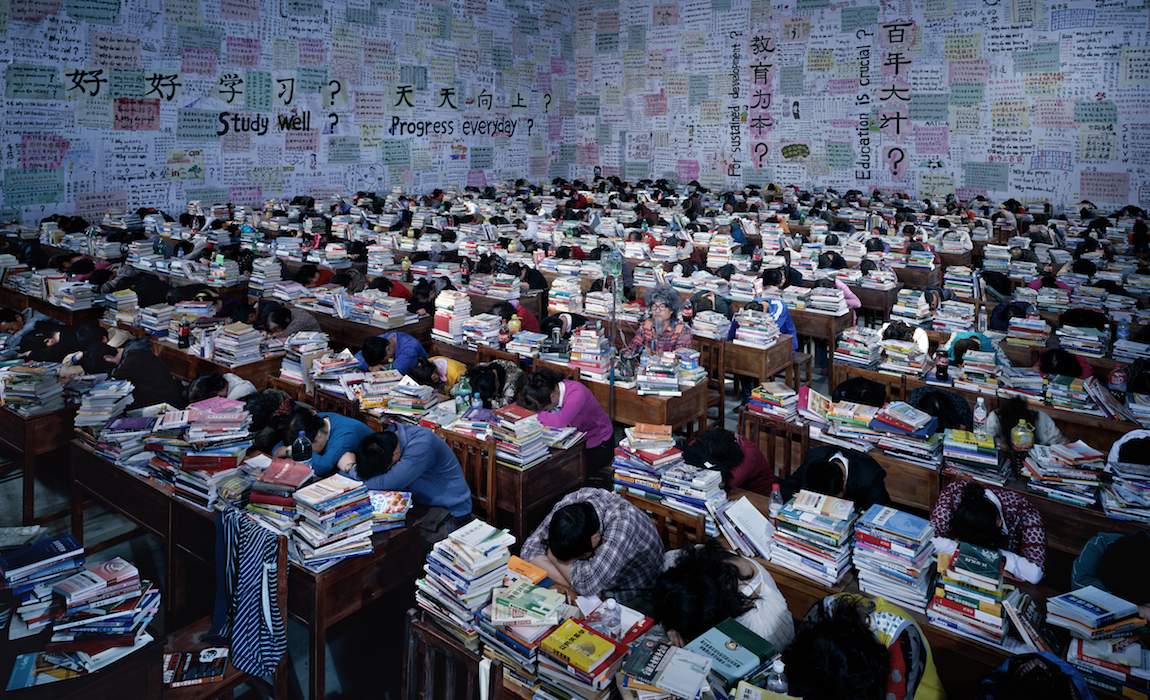Reformation
The unbridled creativity of post-millennial Chinese art is at our fingertips.
Overview
Step inside White Rabbit Gallery for their 10th milestone exhibition, Reformation, and you'll undoubtedly spend a good slab of time staring up at the spectacular Salon Hang in the foyer. From Bingyi's I Watch Myself Dying, throbbing with Frida Kahlo-esque torment, to Chen Chun Hao's meticulous landscape of glittering nails, it's a glorious quilt of past favourites, stretching from floor to ceiling. Although, do make sure you tear yourself away eventually, because the upper floors are crammed with more marvellous acquisitions.
Reformation is a meditation on the cultural explosion that has burst forth from the ‘opening up’ of China. These works are full of wild experimentation and daring new directions. However, there is also an emphasis on painterly craft, which is perhaps residual of the rigour of Soviet art training. In this way, it’s interesting to see how traditional techniques and subversive ideologies coalesce to produce dramatic results.
There is a current of optical trickery that courses through this exhibition. Take for example, Zhou Xiaohu’s silicon business men frozen in mid-conversation. These arrestingly realistic sculptures are partnered with ‘mirrors’ that reflect animated paintings of their facial expressions. I have to say, this illusion achieved its full effect on opening night amid swarms of people. There's also Dong Yuan’s scrupulous reproductions of domestic interiors by European masters. However, the twist is that she divides the painted subjects from their backgrounds, pegging them up like freshly laundered canvas clothing. It is as if she is cleansing and cataloguing the content according to her personal preference.
However, if these works delve into double takes, He Yunchang's epic of self-torture is frighteningly real. According to the artist, physical torment generates the ‘intensity’ needed to transform ordinary experiences into art. In One Metre of Democracy, a group votes on whether a surgeon will make a one metre cut from He Yuchang’s shoulder to his knee without anaesthetic. As you can imagine, the gruesome result is squeamish and deeply guilt-inducing. It seems everyone associated with the process carries some level of responsibility for the artist's agony.
There are also notions of sin and seduction running throughout Reformation. On level two, you’ll be struck by the fetishistic centrepiece of the exhibition. Play 201301 by Madeln Company is a cathedral of genuine and artificial leather. Adorned with BDSM accessories, this castle of kink is embedded with both contemporary and medieval understandings of ‘gothic.’ Also, the conspicuous overlap of sex and religion provokes some pretty interesting questions regarding lust, pleasure and guilt.
Neighbouring this work is Zhao Bo's Circulation which has a similar theme of excess. Reminiscent of Goya and Daumier, the lushness of Bo's painterly style is disturbed by the depiction of a giant, godly toad, whilst slaves toil tirelessly in the foreground. It comes across as a kind of dystopian fairytale with an element of shock eroticism. You don't whether to laugh or cringe. I would also add the sinister soundtrack bleeding into the gallery space from Yi Lian’s video work,Undercurrent instils an ominous atmosphere that compliments the sadistic potential of the other works quite nicely.
Whether you're absorbed by the hypnotic rotations of Shyu Ruey-Shiann's Eight Drunken Immortals or Tu Wei Cheng's antiquated image-makers, there’s just so much to see at Reformation. Another wonderful work that deserves a mention is Hu Weiyi's poignant photography series, documenting the temporary tattoos of clothing marks on skin. Whilst there’s obviously a strong Chinese core, there’s an increasingly global tenor to many of these works. Delivering the blockbuster exhibition that we all expected, White Rabbit Gallery remains a remarkably well-run and accessible treasure trove, offering up art that is visually and conceptually enthralling.
Follow You (2013) by Wang Qingsong.





